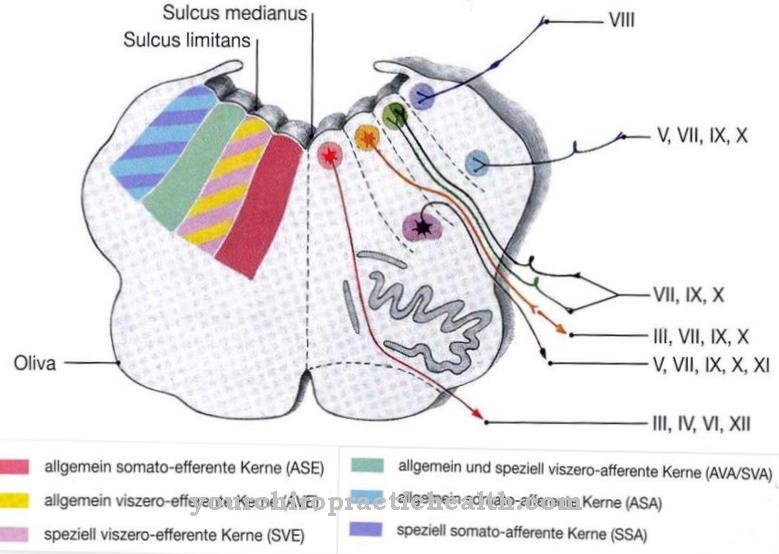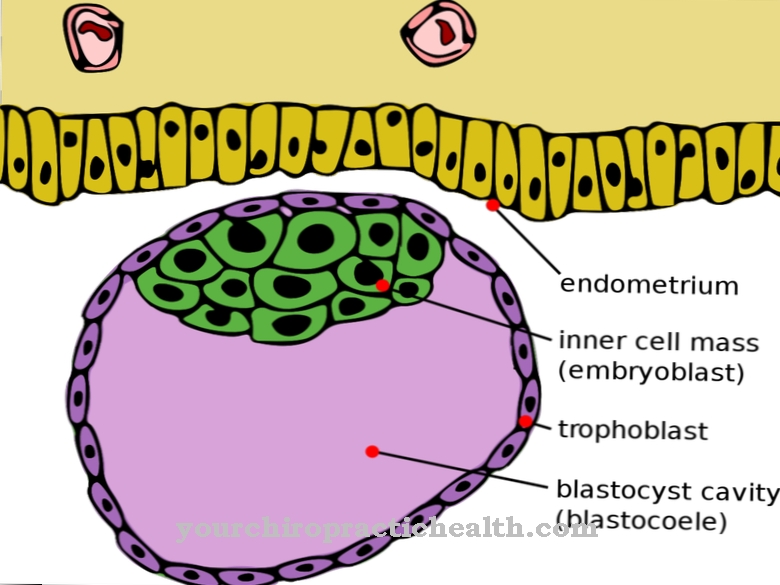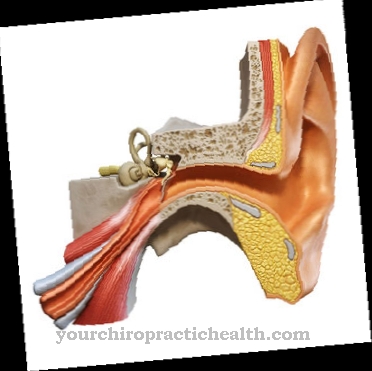What is the nasal bone?
As part of the facial skull lies the human Nasal bone right in the middle of the face. It forms the upper part of the nose and is made up of two small, elongated bones. In the transverse direction, the nasal bone shows an outward curvature, while it bends inward in the longitudinal direction. As a so-called nasal roof, it encloses the nasal cavity, also with cartilage in the front part, which is supposed to protect it from the risk of breakage.
There is a small hole in the middle of the nasal bone to allow a vein to pass through. The nasal septum runs along the inside of the nasal bone. It acts as a partition between the two nasal cavities, which are roughly the same size. Above the nasal septum is the turbinate that surrounds the upper nasal passage.
Anatomy & structure
As an important bone in the human nose, the nasal bone forms part of the root of the nose. Together with the frontal bone process and the upper bone processes, it protects the internal olfactory organs as a hard component. In addition, the bone acts as a solid foundation for the cartilaginous part of the nasal bone, which sits on the outside of the nose and is mobile.
The cartilage of the nasal tip, consisting of the nostrils and the nasal bridge, not only form a connection to the nasal septum, but also determine the shape of the nostrils. As an important basic structure of the respiratory organ, the solid part of the nasal bone holds the upper edge of the nasal septum in place. It divides the nose into a right and left nasal passage.
The nasal bone not only offers solid protection for the nose's olfactory and respiratory functions, it also has a decisive influence on the aesthetic effect of the face. Many rhinoplasty operations result in a more harmonious change in the overall impression.
Function & tasks
Because the bone structure of the nasal bone consists of very fine bones, fractures can easily occur. If the two bone parts break through, for example, through the application of force such as pushing or hitting, the cartilaginous part is often affected as well.
Severe pain, nosebleeds, swelling and a deformed nose are considered external symptoms of a broken nose and should be examined by a doctor immediately. The type of therapy depends primarily on whether the affected person has a displaced or unshifted fracture.
In order to avoid permanent damage in both cases, medical treatment should always be carried out within one week. With the help of an X-ray, the specialist can see whether fragments of the nasal bone have shifted or whether the bones are in the right place. A displaced fracture of the nasal bone in which the shape of the nose was retained can grow back together without help. Decongestant pain relievers, nasal drops, and a nasal support bandage are all sufficient to heal the break.
You can find your medication here
➔ Medicines for colds and nasal congestionIllnesses & ailments
In most cases, if the bridge of the nose is displaced or deformed, surgical intervention and the nose must be splinted afterwards. This procedure prevents long-term impairment of nasal breathing or the sense of smell.
In the case of heavy nosebleeds, a nasal packing is usually used to compress the vessels to quickly subside the bleeding. If the nasal septum is also affected by an injury, the bleeding between the bones and cartilage and the bones or cartilage skin can lead to a complete restriction of nasal breathing.
To prevent permanent damage to the nasal cartilage, a nasal septum hematoma must be operated on in almost all cases. During this operation, the bruise will be opened and the blood will be removed. A nasal packing can not only prevent further bruising after the procedure, but also support the inside of the nose.
Painkillers, antibiotics and nasal drops also help to support the healing of the fracture. Approximately eight to ten days after the fracture, the bones must be brought back into the correct position, otherwise there is a risk that the wrong position will solidify.
A fracture of the nasal bone can also lead to what is known as a crooked nose. In many cases, this is only discovered when the swelling of the fracture has subsided. A crooked nose can also develop when growth is uneven in childhood. If this creates an uneven septum, nasal breathing can also be difficult. In this case, surgical correction will help.
Further deformations of the entire bridge of the nose can either be congenital or result from various diseases. For example, the saddle nose - an indentation of the bridge of the nose - is formed either by trisomy 21 in the womb, by tumors on the nose or by fractures. Appropriate nasal surgery can not only improve the shape of the nose, but also improve the breathing of those affected.
The mostly congenital hump shape of a nose can also be corrected by plastic surgery. If the nasal septum is too long in relation to the bridge of the nose, there is a so-called tension nose. Because the nostrils of a tension nose are too small in many of those affected, in many cases it leads to restricted nasal breathing. An appropriate operation can also remedy this in this case.
























.jpg)



